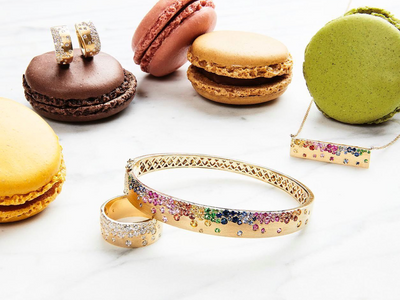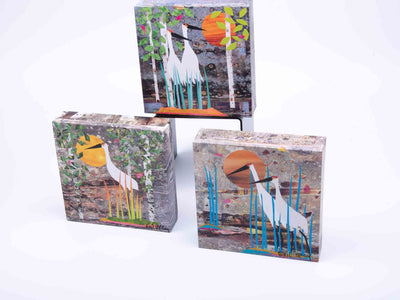
"When Clay meets Fire", Door County Living
Original, Full Article: When Clay Meets Fire by Alyssa Skiba.
We are excited that Chad Luberger was included in an article of Door County Living (Early Summer 2019) about potters in Door County! Here is an excerpt from the article concerning Chad.
Modern-Day Efficiencies
Whereas a reduced-oxygen environment — such as those created during the wood-firing and raku processes — creates unpredictable colors and mottled textures, an oxygen-rich environment allows for clean, bright and rich colors.
For Chad Luberger of Plum Bottom Gallery, the predictable results of oxidation firing represent the ultimate freedom. He fires in a computer-controlled electric kiln, which he likens to a giant toaster.
“You’re running electric elements through your kiln,” he said. “There are plenty of air gaps in those kilns that oxygen can easily flow through, and you’re running what’s called an oxygen-rich or neutral atmosphere.”
In the art world, control and electric can easily draw conclusions of ease and a production mindset. It has meant the opposite for Luberger, who has left reduction firing in gas kilns behind for the energy and time-saving efficiencies of his electric kiln.
Where he once spent three months building clay bodies and getting between four and six firings per year, he is now able to produce porcelain work for the smaller electric kiln and fire it at least every four weeks.
“I’m really able to transfer all that knowledge back into the work a lot more quickly,” he said. “So on the glaze side, improvements are happening at a quicker rate because I’m having a lot more information in a typical year than I was before.”
Ironically, the efficiencies of modern equipment have allowed Luberger to continue evolving his ikebana vases, which are used in an ancient art form: Japanese flower arranging. He has also fashioned himself into a crystallographer of the artistic sort, taking advantage of the consistency of heat in his electric-fired kiln to play around with crystalline glazes.
“With crystalline glazes, you’re actually encouraging crystals to grow in your glaze,” Luberger said. “Crystals naturally form in the earth over millions of years, but what I’m able to do in a 24-hour period is reproduce the conditions in the earth that crystals grow in.”
For pottery lovers, this constant feedback and artistic freedom lead to constant surprises during each visit: the ultimate goal of every artist.
“Like [with] all art, you’re constantly looking at your results and going, what do I want to do next?” Luberger said.
Back to Blog

